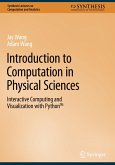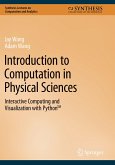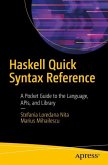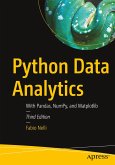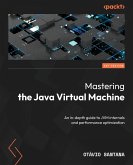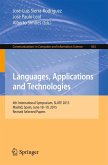Numericalcomputation, knowledge discovery and statistical data analysis integrated withpowerful 2D and 3D graphics for visualization are the key topics of this book. ThePython code examples powered by the Java platform can easily be transformed toother programming languages, such as Java, Groovy, Ruby and BeanShell. Thisbook equips the reader with acomputational platform which, unlike other statistical programs, is not limitedby a single programming language.
The authorfocuses on practical programming aspects and covers a broad range of topics,from basic introduction to the Python language on the Java platform (Jython),to descriptive statistics, symbolic calculations, neural networks, non-linearregression analysis and many other data-mining topics. He discusses how to findregularities in real-world data, how to classify data, and how to process datafor knowledge discoveries. The code snippets are so short that they easily fit intosingle pages.
Numeric Computation and Statistical DataAnalysis on the Java Platform is a great choice for those who want to learn how statisticaldata analysis can be done using popular programming languages, who want tointegrate data analysis algorithms in full-scale applications, and deploy suchcalculations on the web pages or computational servers regardlessof their operating system. It is an excellent reference for scientific computations to solvereal-world problems using a comprehensive stack of open-source Javalibraries included in the DataMelt (DMelt) project and will beappreciated by many data-analysis scientists, engineers and students.
The authorfocuses on practical programming aspects and covers a broad range of topics,from basic introduction to the Python language on the Java platform (Jython),to descriptive statistics, symbolic calculations, neural networks, non-linearregression analysis and many other data-mining topics. He discusses how to findregularities in real-world data, how to classify data, and how to process datafor knowledge discoveries. The code snippets are so short that they easily fit intosingle pages.
Numeric Computation and Statistical DataAnalysis on the Java Platform is a great choice for those who want to learn how statisticaldata analysis can be done using popular programming languages, who want tointegrate data analysis algorithms in full-scale applications, and deploy suchcalculations on the web pages or computational servers regardlessof their operating system. It is an excellent reference for scientific computations to solvereal-world problems using a comprehensive stack of open-source Javalibraries included in the DataMelt (DMelt) project and will beappreciated by many data-analysis scientists, engineers and students.


